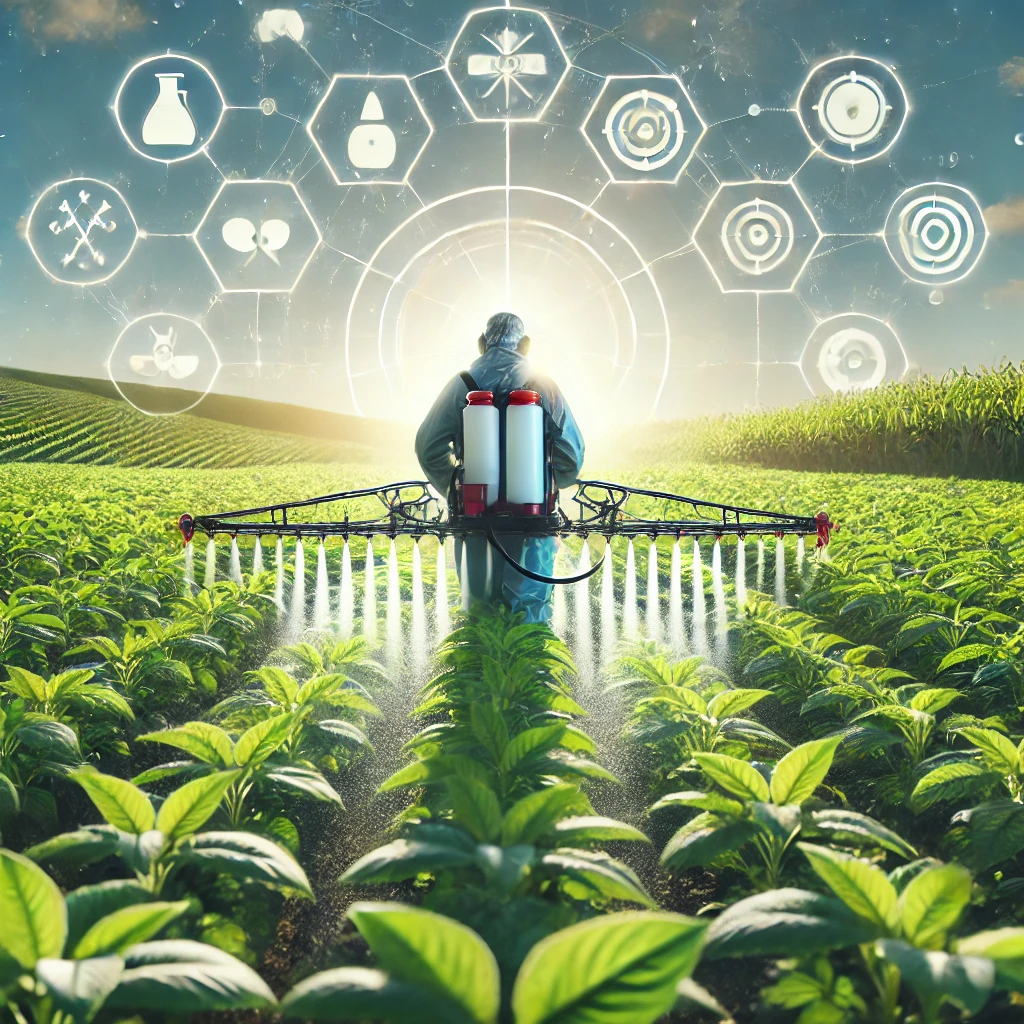The global crop protection chemicals market is estimated at USD 79.3 billion in 2024 and is projected to reach USD 101.0 billion by 2029, at a CAGR of 5.0% from 2024 to 2029. As the global population continues to rise, the demand for food production is increasing exponentially. However, farmers face significant challenges, including pest infestations, plant diseases, and unpredictable weather patterns. Crop protection chemicals play a crucial role in modern agriculture by safeguarding crops from pests, weeds, and diseases, ensuring higher yields and food security.
What Are Crop Protection Chemicals?
Crop protection chemicals, also known as agrochemicals, include pesticides, herbicides, fungicides, and insecticides. These chemicals are designed to control or eliminate harmful pests, weeds, and pathogens that can damage crops and reduce yields. The different categories of crop protection chemicals include:
- Insecticides: Used to control insects that attack crops, such as aphids, caterpillars, and beetles.
- Herbicides: Target unwanted weeds that compete with crops for nutrients, water, and sunlight.
- Fungicides: Prevent and control fungal infections, such as powdery mildew and rust, which can devastate entire crops.
- Biopesticides: Derived from natural sources like bacteria, fungi, or plant extracts, offering an eco-friendly alternative to synthetic chemicals.
Importance of Crop Protection Chemicals
- Increased Agricultural Productivity: These chemicals help farmers protect their crops from harmful organisms, ensuring higher yields and reducing crop losses.
- Food Security and Quality: By preventing pest infestations and diseases, agrochemicals contribute to a stable and sufficient food supply while maintaining the nutritional value of crops.
- Economic Benefits for Farmers: Effective crop protection leads to higher yields and profits, reducing financial risks for farmers and enabling sustainable farming practices.
- Reduction of Post-Harvest Losses: Crop protection chemicals extend the shelf life of harvested produce by preventing spoilage caused by insects and fungi.
Download PDF Brochure: https://www.marketsandmarkets.com/pdfdownloadNew.asp?id=380
Innovations in Crop Protection Chemicals
The agrochemical industry is evolving rapidly, with a focus on sustainability and reduced environmental impact. Some key advancements include:
- Biological Crop Protection Solutions: The use of natural predators, beneficial bacteria, and biopesticides is gaining popularity as a sustainable alternative.
- Precision Agriculture: Digital tools and AI-driven analytics help farmers apply crop protection chemicals more efficiently, minimizing waste and environmental damage.
- Nano-Formulations: Advanced nanotechnology enhances the effectiveness of pesticides while reducing chemical usage.
- Integrated Pest Management (IPM): A holistic approach combining chemical, biological, and cultural control methods to manage pests sustainably.
Crop Protection Chemicals Market Trends in 2025
The crop protection chemicals market is undergoing significant changes driven by technological advancements, regulatory shifts, and increasing demand for sustainable agricultural solutions. Here are the key trends shaping the industry in 2025:
- Rising Demand for Bio-based Pesticides: With growing concerns over chemical residues and environmental impact, biopesticides (including microbial pesticides, plant extracts, and pheromones) are gaining traction. Governments worldwide are promoting eco-friendly alternatives, fueling the shift toward biological crop protection.
- Adoption of Precision Agriculture Technologies: Farmers are increasingly leveraging AI, IoT, and drone technology to optimize pesticide use. Precision application methods help reduce waste, enhance efficiency, and lower costs, contributing to sustainable farming practices.
- Stricter Regulations on Synthetic Chemicals: Regulatory bodies in Europe, the U.S., and Asia-Pacific are imposing stricter restrictions on synthetic pesticides, driving companies to reformulate products and invest in low-toxicity, residue-free solutions.
- Growth in Integrated Pest Management (IPM) Practices: The adoption of IPM strategies, which combine biological, mechanical, and chemical methods, is on the rise. These strategies minimize pesticide resistance and environmental damage while improving long-term crop protection.
- Expanding Market in Emerging Economies: Countries like India, Brazil, and China are witnessing a surge in pesticide demand due to rapid population growth and increasing food security concerns. Government subsidies and advancements in agriculture infrastructure further boost market expansion.
- Development of Nano-formulated Pesticides: Nanotechnology is revolutionizing the industry, enabling controlled release formulations that enhance pesticide efficacy, reduce environmental contamination, and improve targeted pest control.
Asia Pacific to Lead the Crop Protection Chemicals Market Throughout the Forecast Period.
The dominance and rapid growth of the Asia-Pacific crop protection chemicals market is driven by the region’s vast agricultural foundation and the growing need to improve crop yields to support its expanding population. With over 60% of the global population, countries like China and India are at the forefront of agricultural production. In these nations, agriculture plays a vital role in the economy, contributing significantly to GDP. As such, there is a pressing need for efficient crop protection solutions to ensure both food security and economic stability. The region grapples with intense pest and disease challenges due to its diverse climates, further spurring demand for effective crop protection chemicals. For example, pests like the Fall armyworm have caused significant crop damage, pushing both governments and farmers to invest heavily in advanced pest management strategies. The growing adoption of modern farming techniques and technologies in countries such as Japan, Australia, and South Korea is also fueling the demand for sophisticated crop protection products. Innovations like precision agriculture, which optimizes the use of chemicals, help minimize waste and maximize effectiveness.
Top Crop Protection Chemicals Companies:
Key players in the crop protection chemicals market are BASF SE (Germany), Bayer AG (Germany), FMC Corporation (US), Syngenta Group (Switzerland), Corteva (US), UPL (India), Nufarm (Australia), Sumitomo Chemical Co., Ltd. (Japan), Albaugh LLC (US), Koppert (Netherlands), Gowan Company (US), American Vanguard Corporation (US), Kumiai Chemical Industry Co., Ltd. (Japan), PI Industries (India), and Chr. Hansen A/S (Denmark).

